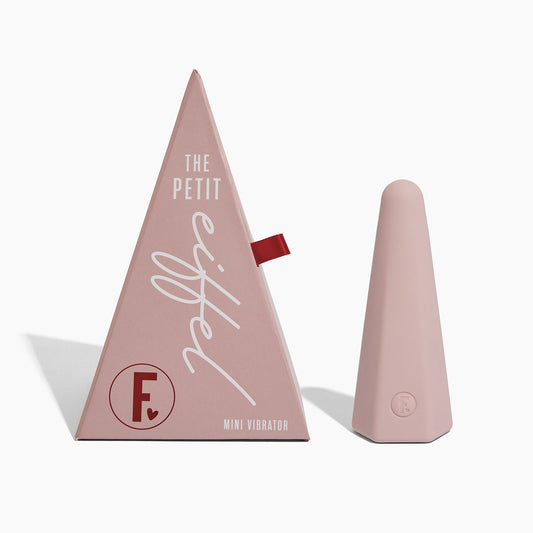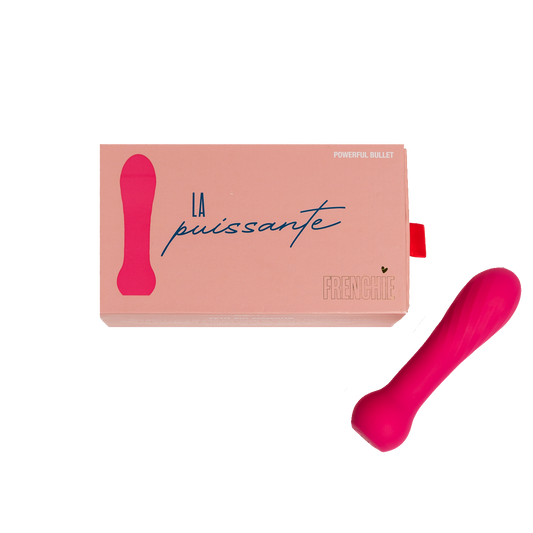Shopping for condoms can be overwhelming. We’ve all been there, standing in front of the condom aisle and trying to decide between all the different options - from different brands, sizes, flavors, latex or non-latex condoms. Most of us just look over our shoulder, choose one and get the hell out of there.
But getting the right condom for you is not a choice you want to leave to chance. Condoms allow us to enjoy sex without worrying about sexually transmitted infections and unplanned pregnancies. However, not all condoms are made the same.
The most commonly used type of condom is the external condom for application on the penis. While external condoms come in all colors, flavors, and sizes, the most important choice you have to make is whether to go for a non-latex or latex condom.
Here we answer all the questions that will help you understand the difference between these two types of condoms and make the best choice for you and your partner(s).
What is a latex condom?
Latex condoms are the most popular and widely available type of condom - making them the first choice for many people. As the name suggests, this type of condom is made out of latex, a natural rubber harvested from rubber trees.
Latex is an exceptionally flexible material. So much that they can stretch up to 800% before breaking, allowing it to accommodate a broad range of sizes without risk of breaking. This elastic property makes latex condoms very resilient and safe.
In 1990, the International Organization for Standardization (ISO) set standard principles for the production of latex condoms, and the European Union joined in with its CEN standard in 1993. These standards of production include that every condom must be tested with an electric current for holes. Furthermore, a random sample of each batch of condoms undergoes a water leak and air burst test.
These standard quality tests make latex condoms very resilient and safe. However, latex condoms are prone to damage when used with oil-based lubricants, including baby oil, petroleum jelly, and cooking oils. There are just some things you should not be using as a lubricant. While they’re perfectly safe when used with water-based lubes.
In addition, while uncommon, less than 1 percent of the general population may have a reaction to rubber latex. This latex sensitivity may develop over time and is more common in people who have increased exposure to latex, mainly through their profession.
To avoid developing latex sensitivity, you could opt for using hypoallergenic condoms that do not contain any synthetic ingredients. Your pleasure should be pain-free.

Pros of Latex Condoms
- Exceptionally stretchy so no risk of accidentally breaking or slipping
- Undergoes rigorous quality tests which ensures their safety
- Highly effective at preventing STIs and unplanned pregnancies
- Widely available
- Generally less expensive than non-latex condoms
- Avoiding the use of plastics, making them friendlier on the environment
- Latex will break up over time in landfills, unlike their non-latex counterparts
Cons of Latex Condoms
- Can get damaged when used with oil-based lubricants
- May develop a latex sensitivity if you don’t use hypoallergenic latex condoms
- Can have a nasty rubber smell if you don’t choose condoms that have been double washed and stripped of their latex smell
What is a Non-Latex Condom?
A non-latex condom is typically made either from polyurethane, polyisoprene, or in some rare cases lambskin (although not commonly found these days - with good reason). The production of non-latex condoms first started in the 1990s, as an alternative for people who are sensitive to latex.
Compared to latex condoms, non-latex condoms are also more conductive to heat, meaning they can give a more natural feeling during intercourse. Nevertheless, there are a few differences between the different types of non-latex condoms.
Polyurethane is a type of synthetically created, non-allergic plastic. Non-latex condoms made of polyurethane are not as flexible as latex ones, causing them to lose their shape and be more inclined to slippage or breakage. This type of condom is safe to use with oil-based lubricants.
On the other hand, polyisoprene condoms are made from synthetic rubber stripped of the protein that causes an allergic reaction. They are as flexible as latex condoms. Different from polyurethane condoms, polyisoprene condoms can’t be used with oil-based lubes.
Pros of Non-latex Condoms
- More conductive to heat, that can give a closer feel
- An alternative for people who have a latex sensitivity
Cons of Non-latex Condoms
- Prone to slippage and breakage
- Less elastic than latex condoms
- Less effective in preventing STIs and unplanned pregnancies
- More expensive than latex condoms
- Depending on the material, may break when used with oil-based lubes
- Made from 100% synthetic ingredients and a worse alternative for the environment
- Will take longer to break down in landfill when disposed of
So which is more effective, Latex or Non-Latex Condoms?
In general, when used correctly, latex condoms are 98 percent effective in protecting against unplanned pregnancies. Correct usage includes making sure you are not using an expired or damaged condom, putting it on and removing it the right way, and using the right type of lube. Specific types of condoms, like the ones that come in a buttercup package, will ensure that you’re always putting them on the right side up - further removing the risk of wrong usage and increasing the condom effectiveness.
When compared to non-latex condoms, several studies have proven that latex condoms are more effective in preventing unplanned pregnancies as well as in protecting against the transmission of diseases. Non-latex condoms were shown to have a higher risk of breakage or slippage during intercourse compared to latex condoms. More specifically, non-latex condoms were around eight times more prone to breakage than latex condoms.
The study further goes to strongly advise that public health messaging promotes the use of latex condoms.
A gathered study article from the National Library of Medicine also supports the argument that latex condoms rarely break or slip during intercourse. Moreover, it was shown that when used correctly, latex condoms have a very low risk of semen leakage as well as a high contraceptive efficacy.
Moreover, it is worth noting that some types of non-latex condoms, such as lambskin condoms do not provide protection against STIs due to their porous nature.
Overall, latex condoms have a higher efficacy rate compared to non-latex condoms.
To ensure this high efficacy, Frenchie Beret Condoms are electronically triple-tested for safety.
Do Latex Condoms Feel Different from Non-Latex Condoms?
Size doesn’t matter, but when it comes to choosing a condom that feels good, it does. The general rule is: the thinner the better.
Some people may complain that condoms take away sensation during sex. That’s why they look for ultra-thin condoms.
Typically, given their synthetic nature, non-latex condoms are created to be thinner. But that also depends on the brand of condoms you use. You can also find ultra-thin latex condoms that will allow you to experience that skin-to-skin like feeling.
The Frenchie ultra-thin Beret Condoms are only 0.05mm, letting you get up close and personal, without compromising on safety. Pleasurable and safe? Oui Oui!
So which type of Condom should you choose?
That’s why Frenchie has created the Frenchie Beret Condoms. Au natural and hypoallergenic, these condoms are made of 100% natural rubber latex, without any synthetic ingredients, making them perfectly safe for sensitive skin.
Now that you know the difference between latex and non-latex condoms you have the information you need to make the best choice for yourself and your partner(s).
Studies show that latex condoms are the best at preventing sexually transmitted infections and unwanted pregnancies as their flexible nature makes them highly resilient and effective against the risk of slippage and breakage. That’s why it’s advised that you’ll be safer using a latex condom.
Nevertheless, when buying a latex condom, you should choose a condom that is:
Hypoallergenic made for sensitive skin
While rare, in order to avoid developing a latex sensitivity it’s important that your latex condom is hypoallergenic. This will also make it safe to use for people with sensitive skin. And your private parts are quite sensitive!
In an easy to open package
Imagine this: you are getting hot and heavy with a lover and then you pause to put on a condom. But then the pause goes for a bit too long as you are struggling to find which way of the condom is up. And then the moment is lost. Or even worse, you put the condom on the wrong way - decreasing its effectiveness. That’s why you should look for condoms that come in an easy to open package. This way you can open them the right way up, every time.
Au naturel, no synthetic ingredients, and eco-friendly
While latex is a natural ingredient derived from rubber trees, many brands may include synthetic ingredients like paraben, petrochemicals, and synthetic colorants in the manufacturing process. These products are harmful to your skin as well as the environment. By nature, condoms are a single-use type of product. So it’s important you choose condoms that are good for you and the environment.
100% natural rubber latex condom
Similar to the above point, check the label on your condoms to ensure you’re buying condoms made of 100% natural rubber latex to avoid the harmful synthetic ingredients.
Vegan & Gluten Free
Given that latex is a plant-derived ingredient some people assume that latex condoms are automatically vegan. That’s not always the case. Some condoms get soaked in casein (milk by product) to make them smoother or get tested on animals. Moreover, vegan condoms do not use harsh chemicals such as gluten, which can cause skin irritation. Better for you and the environment.
Cruelty-free
Condoms are considered a medical device, so they’re often tested on animals such as rabbits. However, there are alternative testing methods that do not harm animals. That’s where vegan, cruelty-free condoms come in in order to curb animal testing.
Ultra-thin 0.05mm and durable
Natural latex condoms are typically less thin than their non-latex counterparts. However, this does not have to turn into a pleasure vs. safety dilemma. There are latex condom brands that allow you to get up close and personal, without compromising on safety. Pleasurable and safe? Oui Oui!
Electronically triple tested for safety
This quality and safety test ensures that your condom will not break nor slip during intercourse. So all you get to focus on is enjoying the moment with a peace of mind.
Low-odour & fragrance free
Latex has a distinctive smell which by now most people associate with the smell of sex. There are latex condoms in the market which undergo multiple washing during the manufacturing process, resulting in a low-odour and fragrance free condom for your sensitive nose and taste buds.
TGA approved and registered
TGA stands for the Therapeutic Guide of Australia, a leading source of independent and fact-based manufacturing advice. If your condom claims to be TGA approved and registered it means they have undergone an efficacy assessment and their medicinal claims are found to be supported by scientific evidence.
Fast and Discreet Shipping
To keep the private aspects of your life private, look for condom brands that offer discreet shipping, meaning that the package delivered will not contain any indications of what’s inside. Be sure to also check the shipping times. In this case, the faster it comes, the better ;)












